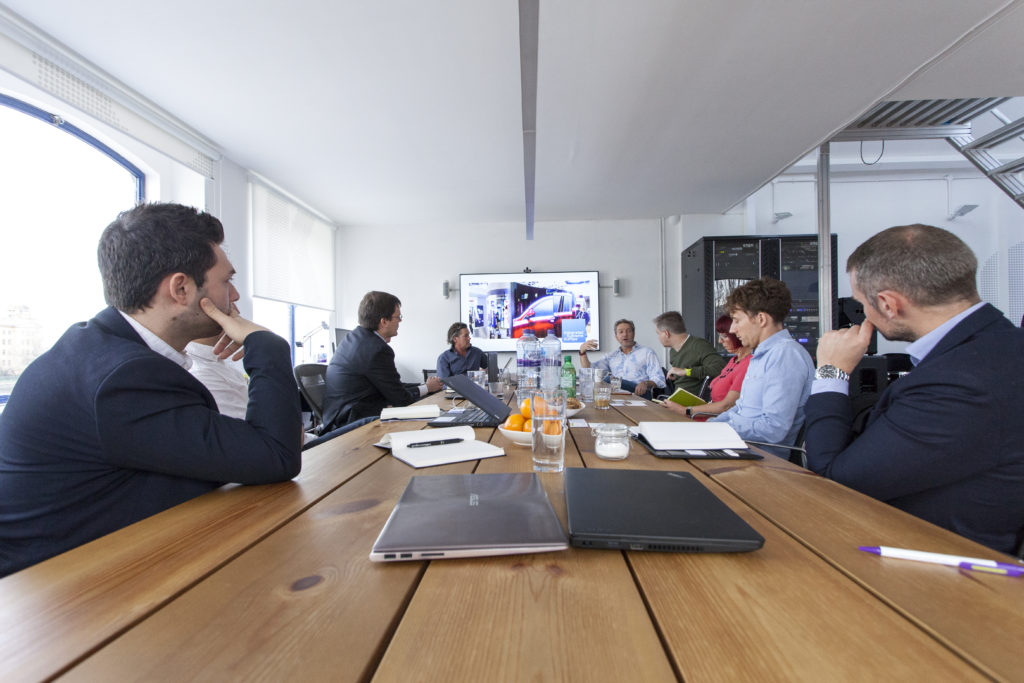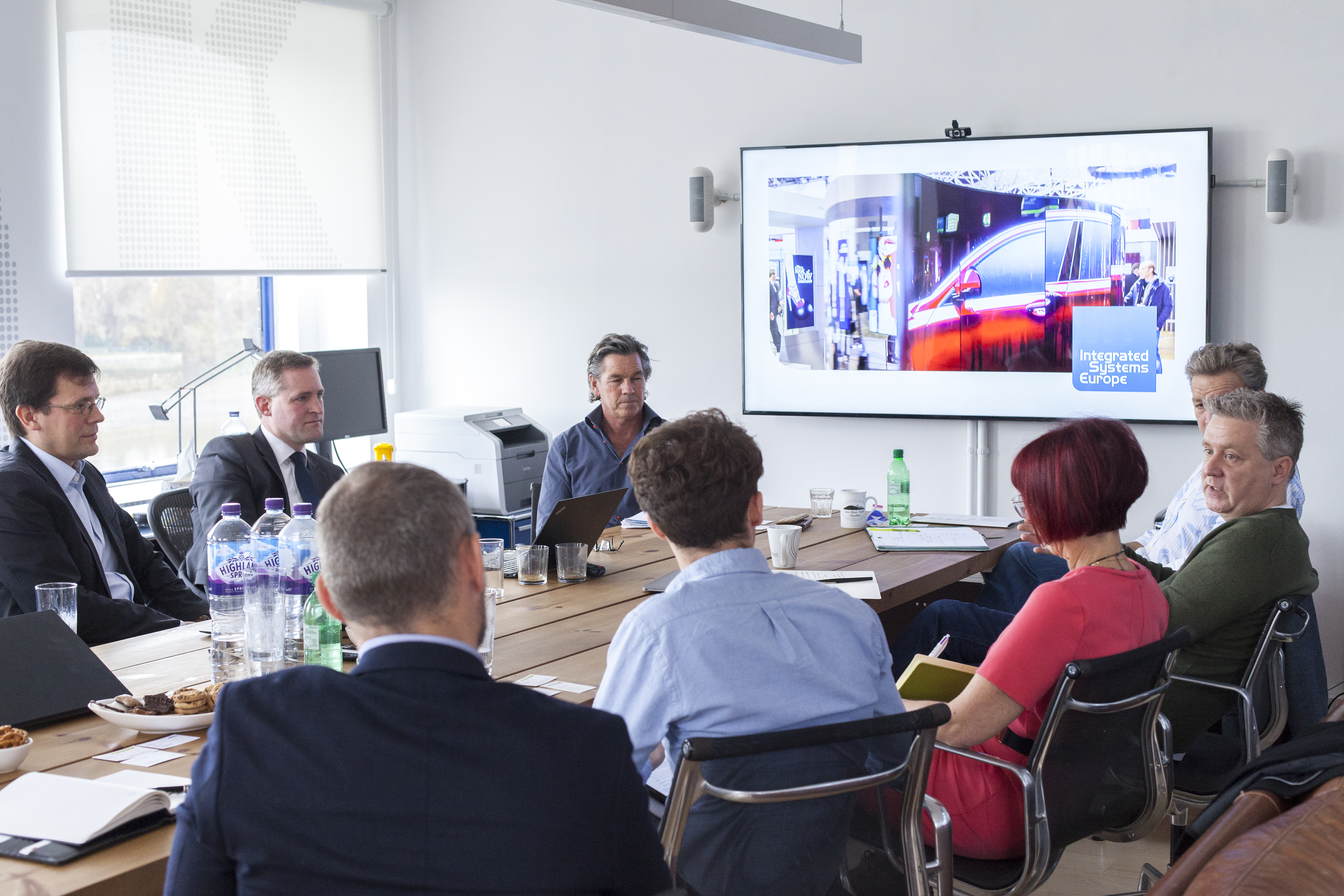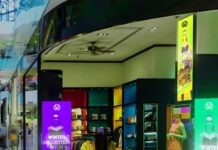There are two key trends in retail we are seeing today; the decline of traditional bricks-and-mortar stores, and the increasing dominance of online behemoths such as Amazon and ebay. Whilst there is a buzz around the need to create online retail offerings, today, 90% of all transactions are still offline and today’s physical stores must now become destinations and adapt to survive. Technology has a very real role to play in this environment, and also can completely transform the customer experience.
We gathered together a panel of experts from both the retail and technology worlds to tackle these issues. Hosted by Florian Rotberg, Chairman of the Digital Signage Summit, the panel included Andrew Gerrie, Chairman of Hotel Chocolat, David Bailey, VP Marketing, Samsung Smart Things, Philippe G. von Stauffenberg and Ignacio Alonso Junquera of technology integrators Trison Worldwide, Gary Watton, Vitra Shopfitting and Stefan Schieker of Invidis Consulting.

Retail Trends: Store Concepts and Challenges of Bricks and Mortar
Participants discussed the challenges faced by traditional store retailers today, including the role of physical stores, the different kind of experiences found within them, as well as on and offline shareable experiences. Technology in a retail environment encompasses so much more than large digital signage screens; content must be engaging, ever-changing and relevant. Beacon technology, lighting control, in-store music, intelligent mirrors in fitting rooms that enhance a stressful experience even electronic shelf labelling and stock control systems, once integrated into an easy to use system all have a role to play in enhancing the customer journey, delivering return on investment.
Gary Watton of Vitra commented that many brands fall victim to the temptation to copy successful market-leaders. This often comes across as a poor replica, and in fact, without authenticity will do more damage than good – let’s not forget that bad customer experiences linger long in the memory. It is therefore important for retailers to make their mark as technology becomes increasingly prominent in physical stores, and in larger, multi-brand retailers.
The customer experience is also greatly affected by the staff in a retail store. Time and again, research shows that good, happy staff, knowledgeable, efficient, and well rewarded, will deliver benefits many times over. What is often overlooked however, according to Stefan Schieker of Invidis Consulting, is that retail technology can significantly improve staff performance; from the music that plays in the store, LED displays showing fabulous, entertaining content, to the improved interaction between staff and customer that technology allows – if the size you want isn’t available in the store, I’ll click here and order it up from the warehouse etc…. Just think of the impact on till staff, having to stand in front of a large format screen which kicks out heat whilst working – how happy they are if that screen breaks down – and what a missed opportunity for the retailer.
Role of Digital Touch points along the Customer Journey
Technology can vastly impact the customer experience instore; the feel, smell, sounds of the store, all influence customers, commented Ignacio Alonso of Trison Worldwide. The change of scope from store-design to multi, omni-channel experiences requires seamless integration of technology, from Digital Signage to Electronic Shelf Labels.
Putting this into action, Gary Watton discussed the concept of altering the way retailers traditionally view the fitting room. Often a forgotten space instore, Gary had many examples of stores where the fitting room is used to store boxes, is set at the back of the store in a poky corner, with a sad set of curtains. Why not put this space at the forefront of the customer experience – it is so often the place where the decision to purchase is made. Today’s technology can completely revolutionise the fitting room. By incorporating technology, such as a magic mirror screen, technology can upsell product by ordering different sizes to the fitting room, whilst clever use of adaptive lighting and RFID-readers which can recognise the item and its natural setting, and then adapts the fitting room lighting to suit. There are also display solutions that can show rear views (delayed mirror), 360°, and even superimpose the clothes onto the customer’s image.
Trends in digital technology
Typically, retailers look to overhaul store design every eight years, yet digital technology moves much quicker than this – usually half the time. It is important for retailers to stay up to date on the latest developments and coordinate with architects, visual merchandising, IT and marketing professionals, in order to create an innovative, engaging customer experience. The typical problem, as David Bailey of Samsung Smart Thing noted, is that technology companies are able to provide tech solutions, but the agency won’t know enough about the technology itself. What retailers need is a bridge between the two – someone who understands the customer and the technology, what solutions are available and what they can be used for.
The retailers that have the edge will be building this into their business models. By integrating the latest digital technology solutions, from new screen technologies (LED, OLED), Electronic Shelf Labels (ESL), Immersive experiences, the Internet of Things (IoT), and, overall, merging store design with technology, retailers can transform the customer experience. As Ignacio Alonso of Trison Worldwide commented, the market leaders are those who have the ability to integrate these different elements for different customers to provide a more personalised customer journey, creating an experiential space that can still be used as a retail space.
Wow concepts vs scalability
It is often the case in a retail environment that complex systems get in the way of the customer experience; the goal is to have simple, scalable, effective, and efficient solutions. As Gary Watton of Vitra notes, retailers need to be able to cater to the needs of their customers, whilst delivering on ‘wow’ factor at the same time.
Simple: Too many agencies create customer experiences which are too complex by introducing technology that looks fancy (and bumps up their pricing) but gets in the way of the customer experience. Note that simple is not easy, in fact it’s quite complex to achieve…
We are now seeing a trend for established online retailers opening flagship, destination stores. They could be at an advantage, having a wealth of historical data to work with regarding customer behaviour. However, in contrast to online retailers, where customers can swap between brands and products, arranging them according to their needs, a bricks-and-mortar retailer may not have that intelligence to draw from – but – they are of course more experienced in what makes real estate successful.
Analytics – measuring efficiency in retail and real-time interactions
Today, the technology exists to measure consumer analytics, from Google Analytics for Brick-and-Mortar, Artificial Intelligence but the difficulty arises in the process, value, and actions resulting from gathering data.
Artificial Intelligence (AI) could play a major role in customer experience and analysing consumer patterns, moving beyond simply measuring gender and age. Humans are much more complex than being able to sell products based purely on this context, noted David Bailey, and the scope for wider interaction through AI technology means retailers need to be flexible in their ability to act on the data.
Truly integrated audio-visual technology can change how people experience the world around them. It can transform the retail environment and ensure a more dynamic and engaging customer experience. As the largest AV show in the world, ISE is the best place to learn from leading retail experts and technologies exhibited at the event, and find out more about the latest retail solutions. ISE 2018 runs from 6th – 9th February, 2018, at the RAI Amsterdam, and will once again welcome a half-day Digital Signage Summit to the show, where attendees can discover more about integrated solutions and how to engage customers in more innovative and flexible ways.
To find out more about ISE 2018 and the Digital Signage Summit event, visit www.iseurope.org. — USE CODE 401825 FOR FREE ENTRY.



























